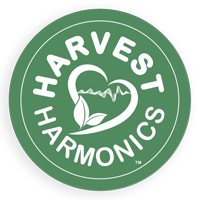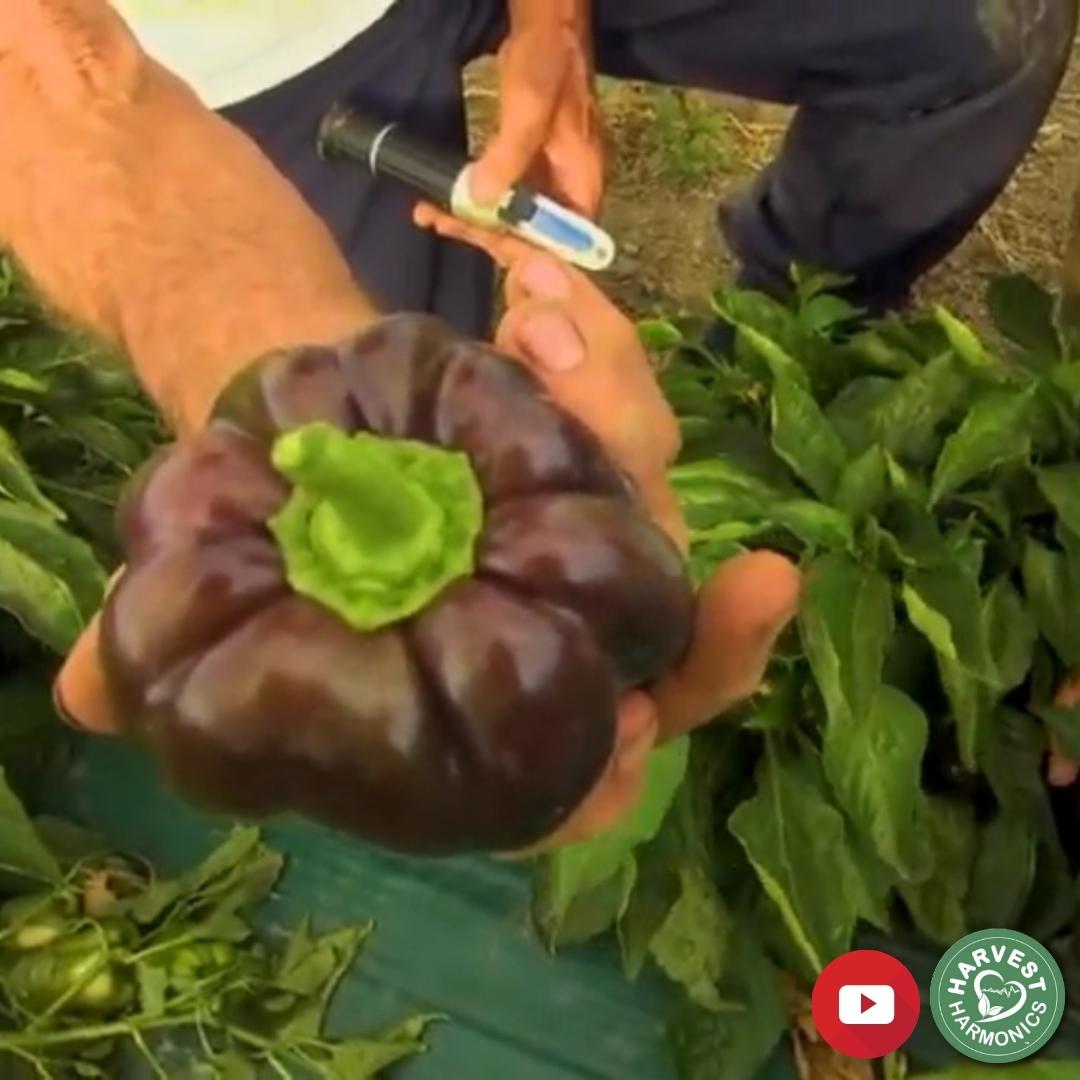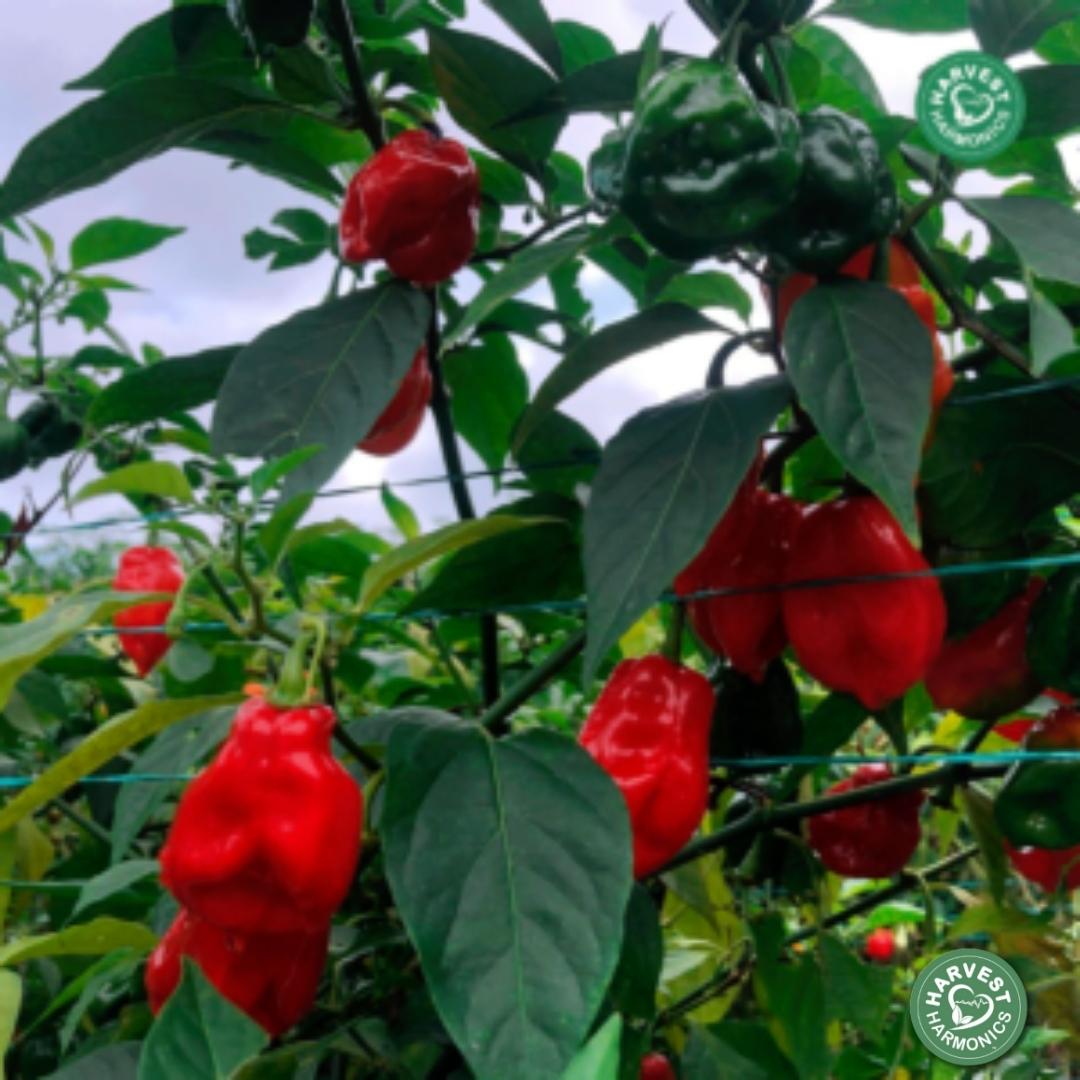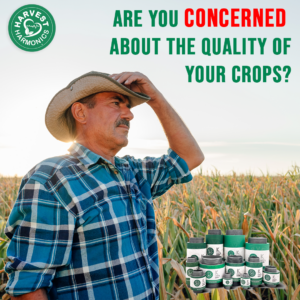Peppers
40% Increase in Brix Rating of Peppers in the USA
Date: September 2019 (fall)
Place: Washington, USA
Details: Edible Acres is a 12-acre organic farm in Tonasket, Washington, USA, and is close to the Canadian border. The owner, Art Heinemann, is highly respected in this region for the high quality of his fruits and vegetables. In 2017, Art installed the Kyminasi Plant Booster (KPB) technology on his farm. Since the initial installation, Art has tested many cultivars of fruits and vegetables using the KPB technology. In June 2019, Art planted bell peppers and hot red peppers for a KPB trial.
Results
The Kyminasi Plant Booster (KPB) technology increased yields while improving the size and flavor of peppers. After three months, the plants that were treated with KPB produced 15 to 20 peppers per plant, and 80% of these peppers were fully grown. The KPB-treated peppers had consistent shape and ripeness. The KPB peppers tested at 10 degrees Brix, which is 40% higher than the average 5 to 7 degrees Brix rating for these cultivars. The KPB plants were still blooming in September, which is at the end of the season for this farm. Art also noted that the KPB pepper plants had so much energy that they developed woody stems. This indicated that the KPB plants were transitioning into perennials, which is highly unusual for this area, as peppers usually only develop into perennials in warmer regions.
Greater Vigor & 97% Yield Increase of Bell Peppers in Peru
Date: December 2019
Place: Peru
Details: Kyminasi Plants Crop BoosterTM (KPCB) technology was installed by Guillermo Cáceres on a 30-hectare bell pepper field in Peru.
Results
After only 16 days of using the Kyminasi Plant Booster, the field that was treated with KPCB produced bell pepper plants that grew faster and more uniformly than the control plants. The KPB-treated pepper plants produced 30% more flowers than the control plants. The KPCB-treated pepper plants produced more vigorous growth and the foliage was a darker green color than the control plants. At harvest, the KPCB-treated pepper plants produced a 97% yield increase as compared to the control field.
(KPCB) Average pepper weight: 35 grams (g) [35 g x 45 peppers = 1,575 g]
(Control) Average pepper weight: 21 g [21 g x 38 peppers = 798 g]
70% Yield Increase & 25% Increase in Size of Peppers in Panama
Date: May 2015 (summer)
Place: Bajo Boquete, Panama
Details: Kyminasi Plants Crop BoosterTM (KPCB) technology was installed in a pepper greenhouse, and yields were compared with control pepper greenhouses.
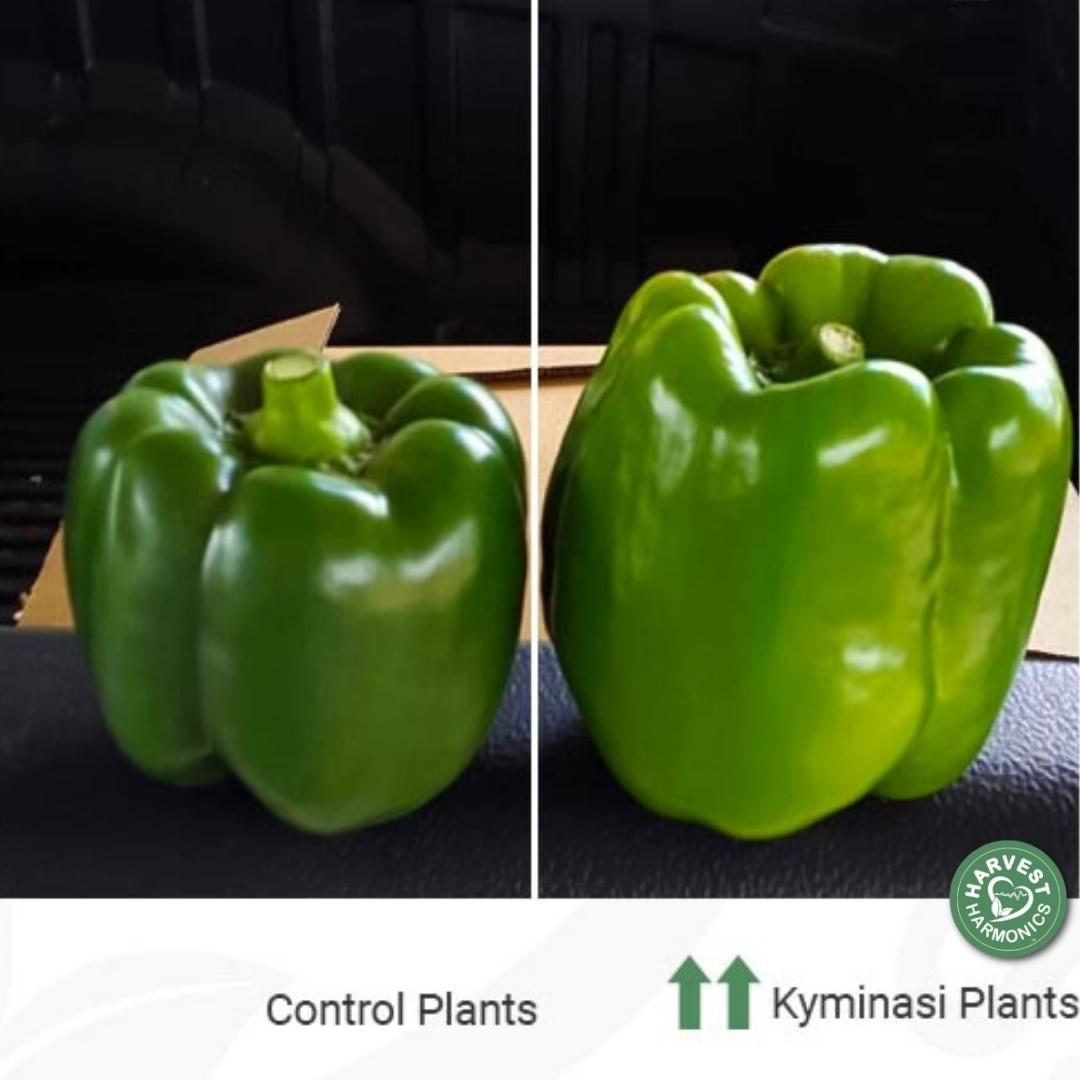
Results
Peppers that were treated with KPCB were 25% larger in size than the nontreated control crop. The increase in weight of the KPCB peppers was due to wider membranes being developed. This allowed for a longer duration of pepper height growth by 10 to 15 days as compared to the control crop. Overall, the KPCB pepper crop achieved a 70% increase in yield as compared to the control crop.
87.5% Increase in Pepper Yield in Peru
Date: January 2020.
Location: Valle de Moche, Perú
Details: Kyminasi Plant Booster (KPCB) technology was installed on Jaime Sánchez’s pepper field in Peru
Results
Historically, Jaime was able to harvest an average of 16 peppers per plant at this field during the summer season. While using the Kyminasi Plants Crop BoosterTM this summer for 75 days, Jaime obtained an average of 30 peppers per plant. This is an 87.5% increase in the average yield of peppers using KPCB technology.
Reduction in Agrichemical Use, Improved Shelf-Life, Increased Vigor, & Extended Growth Season of Peppers
Date: June 2021
Place: Valle del Cauca, Colombia
Details: The Kyminasi Plants Crop BoosterTM (KPCB) technology was installed in the last growth stage (9th month) of a Chile Habanero pepper crop in Colombia.
Results
The producer indicated that as soon as they began using KPCB, an improvement in the health of the KPCB-treated pepper plants was observed as the leaves became a brighter green color and new shoots grew prolifically. Historically, the normal pattern for this growth stage of the pepper crop was a decrease in the size of the fruit and a drop in production yields. Even in this late growth stage, the pepper plants that were t
reated with KPCB technology produced a greater quantity of peppers than the control plants and these peppers were larger than ever before. The producer also indicated that the need for agrichemical applications to contro
l rust and mites was reduced with KPCB use. The producer also indicated that he noticed less fruit drop and fruit cracking, as well as improved pepper shelf life and a greater post-harvest storage consistency with KPCB use as compared to the control crop.
Questions? Schedule your free Zoom appointment.
